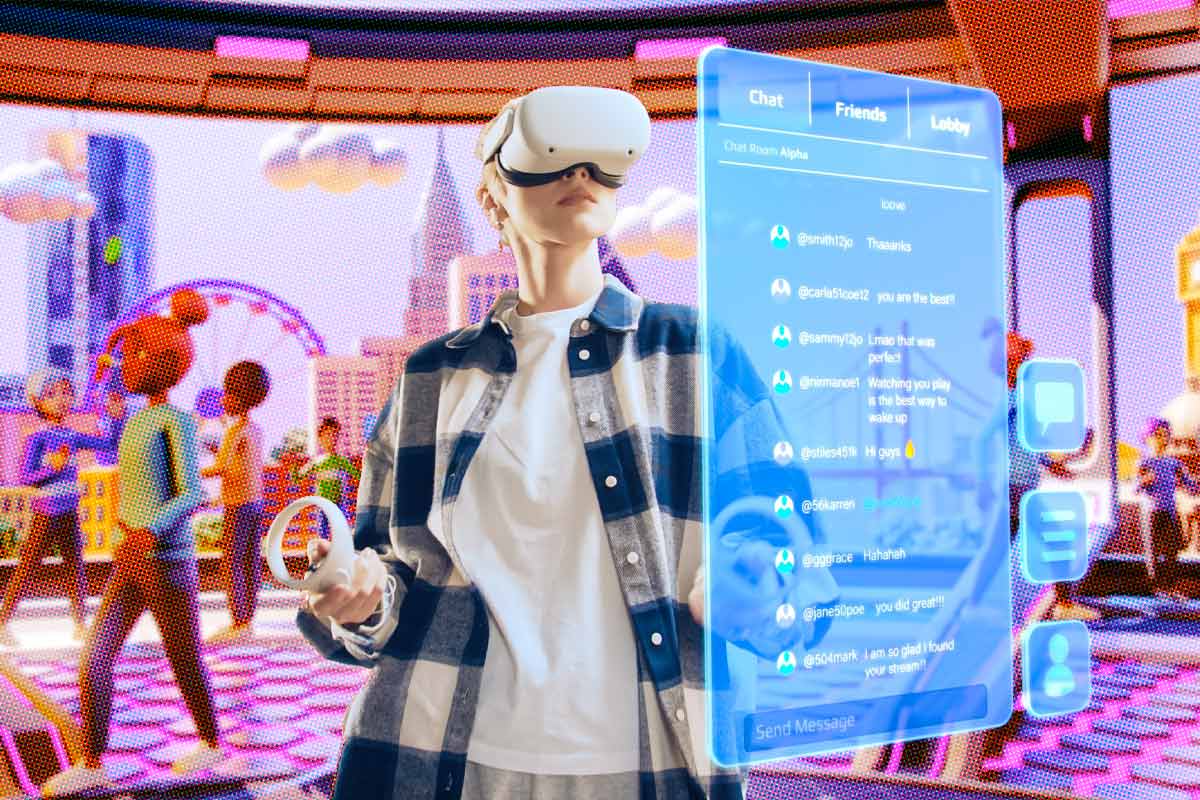Web3, Metaverse and Digital Twins: Convergence of Virtual Worlds
Going all in or taking a more conservative path to implementing emerging technologies – what is the best approach for companies? Experts weigh in
Topics
NEXTTECH
News
- Identity-based Attacks Account for 60% of Leading Cyber Threats, Report Finds
- CERN and Pure Storage Partner to Power Data Innovation in High-Energy Physics
- CyberArk Launches New Machine Identity Security Platform to Protect Cloud Workloads
- Why Cloud Security Is Breaking — And How Leaders Can Fix It
- IBM z17 Mainframe to Power AI Adoption at Scale
- Global GenAI Spending to Hit $644 Billion by 2025, Gartner Projects

[Source photo: Venkat Reddy Marri/MITSMR Middle East]
Today, it’s almost impossible to open your phone without scrolling across a mention of the ever-looming virtual worlds. The meteoric rise of Web3, metaverse, and digital twin technologies have led to some brilliant breakthroughs separately, but the real impact of the present and future will be how these technologies converge. These technologies are a new realm that grants infinite access to every experience imaginable, and it feels suddenly closer than we ever thought possible.
Like any innovation, some emerging technologies are characterized by hyperbole and hysteria. The dramatic rise of cryptocurrency and the whole hype bubble bursting in 2022 had many doubting the future of Web3 and declaring the death of the metaverse. However, tech evangelists believe that “initial mistakes” are no reason to throw the technologies out the window.
Changing the Game
“With Web2 (the current version of the web) and other technologies, there was no revelation of what it would be like. Sometimes, like in startup life, you make mistakes, but through trial and error, you get to what it will be as a business model. Something that we are all happy to engage with over a long time,” said Sebastien Borget, Co-Founder of The Sandbox, a unique virtual world built on Web3 concepts.
In games like The Sandbox, where the Web3 principles are embedded into their metaverse design, “true ownership” lies with the player, and anything earned as a gamer or creator can be utilized across not only one but many platforms. “Web3 and blockchain are truly changing the game,” adds Borget.
Anas Bhurtun, CEO and Co-Founder of Arts DAO, a decentralized autonomous organization representing the largest Web3 / NFT community in the Middle East, echoes a similar sentiment.
”Web3 represents a change where the customer effectively owns a stake in the product brand that is issuing something in some sense. That is a huge change in mindset. The real innovation is how the customer becomes passionate about their stake in this instrument.”
But is it too soon to assume that ownership matters to the customer?
Borget believes the idea of ownership underlying it is not necessarily the first thing you sell to someone, but it’s a powerful one. “It’s not just about owning and potentially making money off it. That is part of it. Yes, you can make money as a customer of the underlying token issued by the brand, but there is an incredible tribalistic need in the human condition to be part of something more than just yourself,” adds Bhurtun.
For bigger enterprises, the buzzwords don’t matter. This year, in May, Emirates Group and Amazon Web Services announced a new collaboration to create an immersive extended reality platform tailored for the airline’s personnel in the UAE. This innovative iXR platform, primarily intended to benefit cabin crew, new recruits, and industry collaborators, incorporates 3D virtual hubs, virtual training modules, gamified settings, and simulated experiences.
“Many enterprises approach the technology through a more conservative model, which includes calculating the ROI, the risks involved, the impact on the brand, etc. It is more like sandbox testing so that we are sure whatever we provide to our passengers and internally as an organization is coming in at the right time and in the right form,” said Ismail Issa, Head of Web3 and Metaverse, Emirates Airline.
Experts emphasize that things will take time to build, and Web3, metaverse, and digital twins are bringing real value to businesses.
Twinning into the Metaverse
Giving an example of a real-life situation when a baby is born during a flight or an unexpected fire in the aircraft, Issa said, “When you have an enterprise metaverse or immersive extended platform, it helps with a more realistic experience, and enables the cabin crew to handle the situation better.”
Achieving the mass simulation and replicating the real-life experience in the enterprise metaverse could seem aspirational, but the foundation has been laid with digital twin technology. (Read more on Unlocking the Potential of Digital Twins in Supply Chains)
“The metaverse has increasingly become a convergence of a whole new range of technologies. Perhaps among the metaverse environments, the most significant application is digital twin,” said Dr. Christina Yan Zhang, CEO and Founder of UK-based The Metaverse Institute.
“There are many different layers of digital twin that can be utilized on a city level to support people-centered city developments and push sustainability goals,” she added.
The concept of digital twins is not new. It was born at NASA in the 1960s as a “living model” of the Apollo mission. Fast forward to 2022, Singapore became the first nation in the world to clone the entire island into the virtual world.
The European Commission’s flagship initiative, The Destination Earth(DestinE), aims to develop a highly accurate digital model of the Earth with an initial focus on the effects of climate change and extreme weather events, their socio-economic impact, and possible adaptation and mitigation strategies.
“Digital twin is going to be applicable everywhere you can think of –manufacturing, healthcare, retail, financial systems,” said Maher Al Kaabi, Independent Board Member and Advisor to Group Chairman, Alserkal Group.
Airports are a critical link to the global transportation system, and streamlining the operations and making travel seamless for passengers has been a top priority for the airline industry.
“We have pockets of areas called real-time DXB, which is a real-time digital view of every airport, every airplane that lands and takes off, how they park, how they depart. And we have a real-time view of all our guests,” said Tareque Choudhury, Vice President-Technology, Dubai Airports.
“Digital twin is taking all that data and creating a holistic view of all airport operations so that our control center can have a real 3D view for a more contextualized view of airport operations. This will enhance airport operations, give us a lot more safety and security, and optimize passenger experience,” he added.
In Saudi Arabia, real estate group Roshn is leveraging digital twin from an urban design perspective, integrating it with virtual reality and community infrastructure planning.
“We use it to go through the design concept that we have and get feedback from customers in terms of where the improvements are needed,” added Jayesh Maganlal, Group Chief Information and Digital Officer of Roshn.
Global car manufacturer BMW recently partnered with Nvidia to build a digital replica of the company’s 400-hectare plant in Debrecen, Hungary, which will be operational in 2025.
Having a digitally simulated factory for large enterprises before the physical one takes shape helps save millions of dollars by better planning and optimizing industrial processes, mitigates the risk of costly mistakes, and accelerates team effort.
Building something so vast virtually doesn’t come easy and is extremely challenging. A successful digital twin strategy requires a comprehensive collection of personnel, infrastructure, data, and more.
“Simulating the real world is quite a task. It’s time and cost, first and foremost. It’s a huge amount of data that needs to be processed. So, computing capabilities need to be faster and cheaper. And obviously, data transfer must be faster and cheaper to get mass adoption,” said Dr. Hamid Haqparwar, Managing Director, BMW Group, Middle East.
“The other challenge is data security and safety because everything is in the cloud,” he added.
Al Kaabi stresses the need for alignment with the company, stakeholders, and board members. He advised against jumping onto the bandwagon if the company doesn’t have a use case and the importance of training and upskilling talent.
“Having a clear business objective and data strategy, ensuring data quality, privacy and security are key. The outcome is as good as your data,” added Maganlal.
New technologies are growing and will play a more crucial role in the years to come. The best thing organizations can do is to decide what they want, gain some experience and metrics, and identify where they can grow. The leap will be worth the payoff if everyone in the organization is aligned and understands the goals and vision.
As with any emerging technology, it’s crucial to critically assess the potential benefits and challenges while keeping an open mind to their future possibilities. Over time, these technologies evolve, find practical applications, and become more integrated into our daily lives.
_________________________________________________
The NextTech Summit was hosted by MIT SMR Middle East on September 20, 2023. The panels on the virtual worlds were moderated by Paul Dawalibi, CEO, Holodeck Ventures and Riaz Naqvi, Senior Editor, Hill+Knowlton Strategies.
The event had Technology Innovation Institute as the presenting partner and Digital Dubai as the strategic government partner. G42 and Boston Consulting Group joined as the strategic sponsor and the gold sponsor.
__________________________________________________





